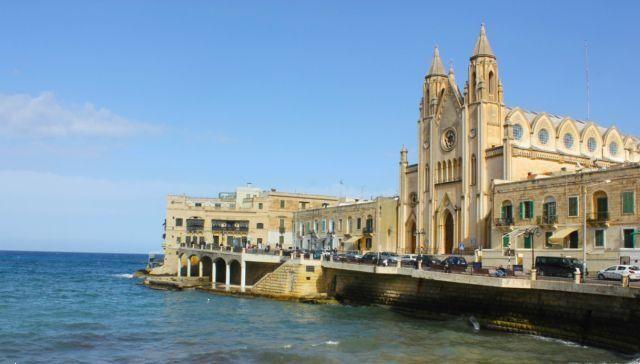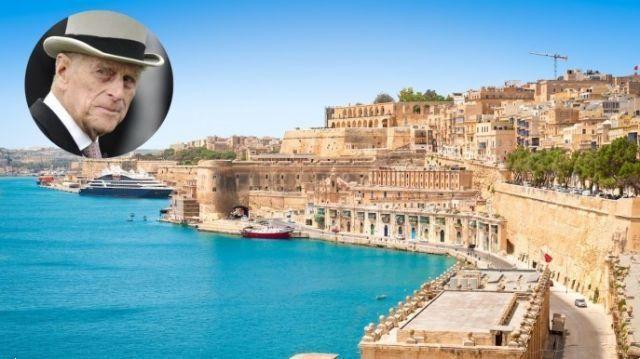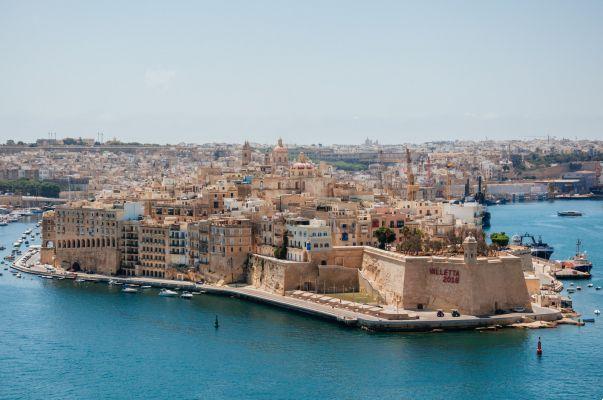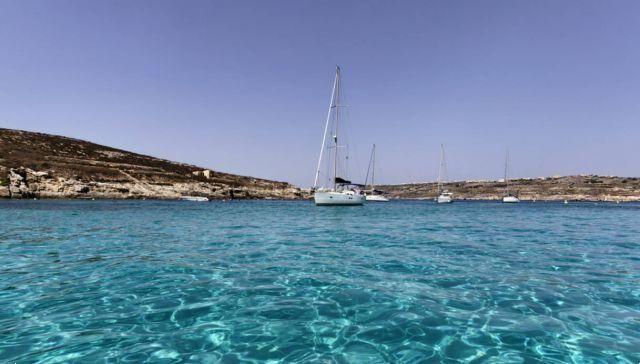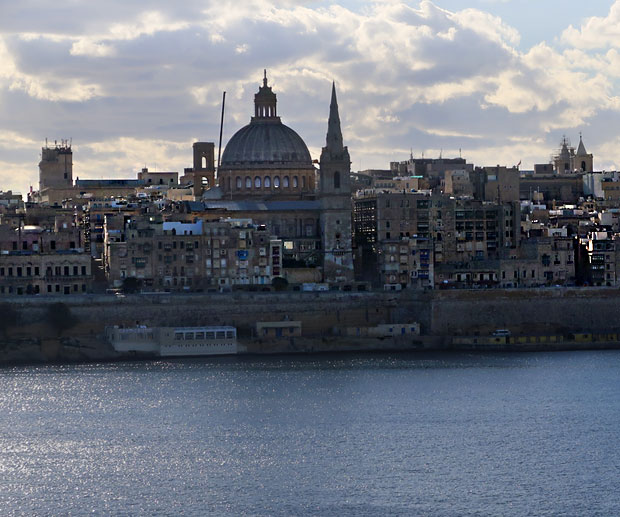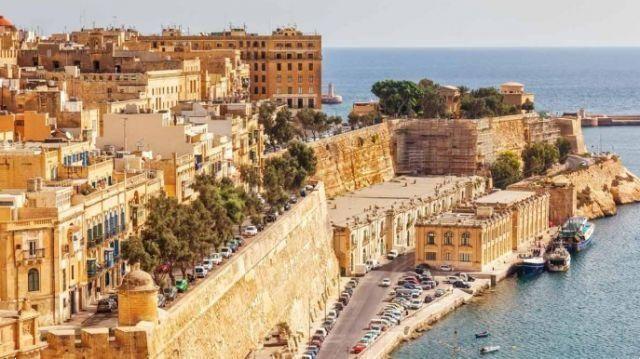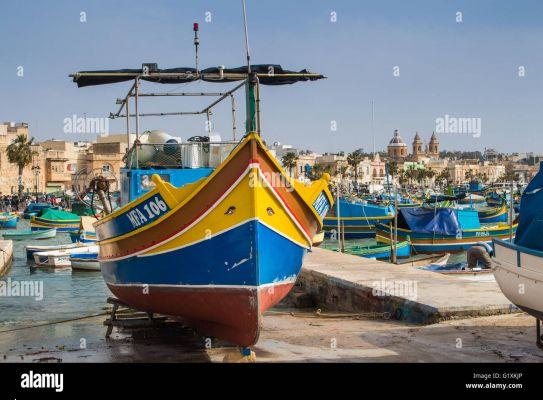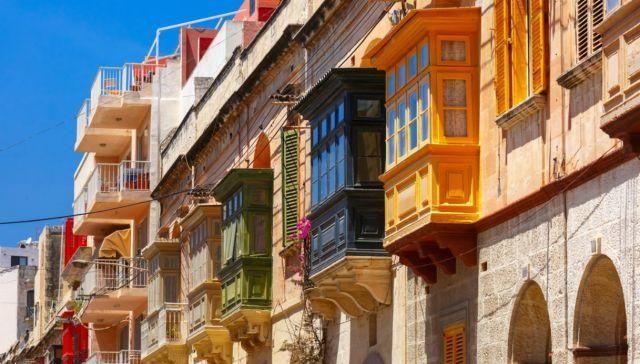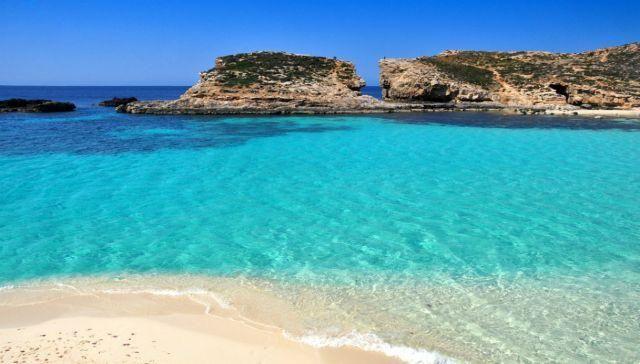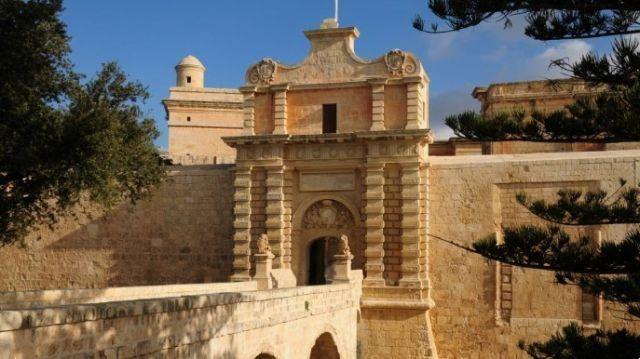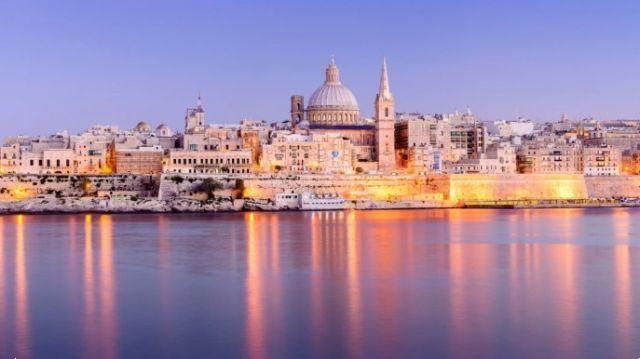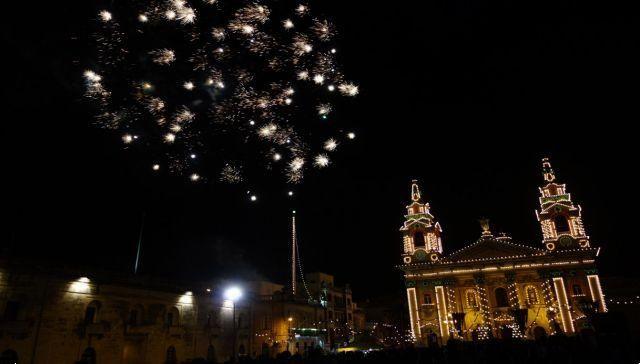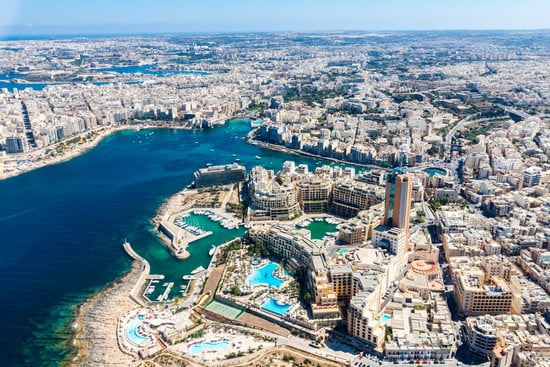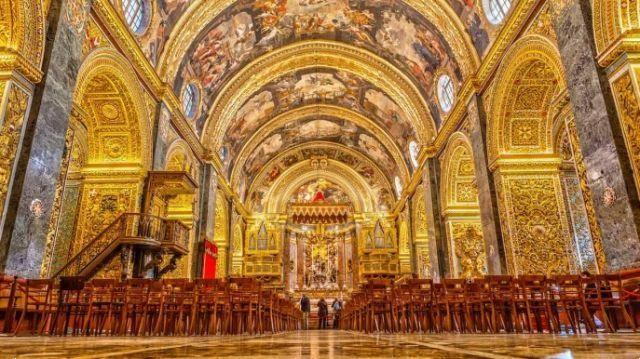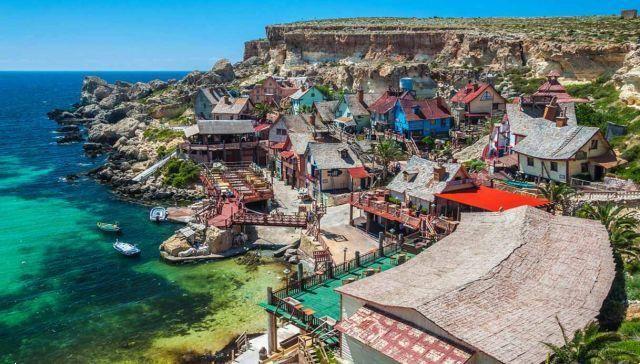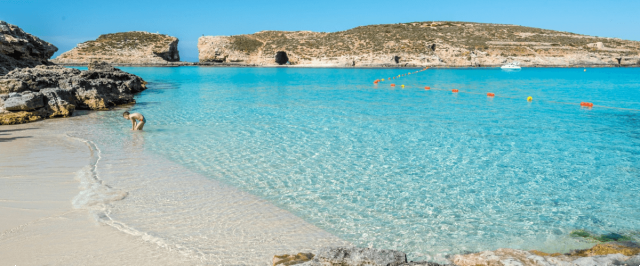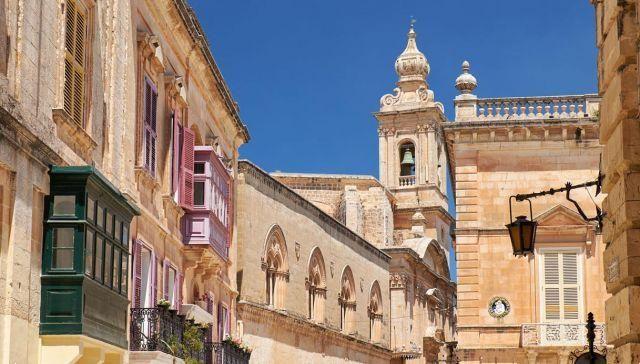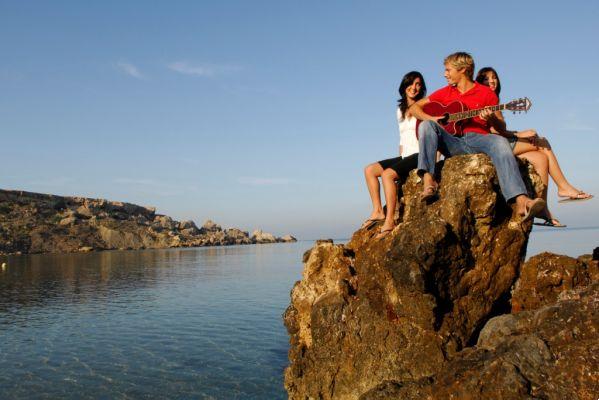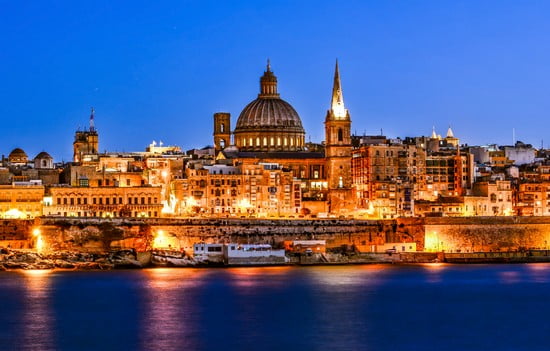
Malta
12 things to do and see in MaltaUn archipelago located between the coasts of Sicily, which is about 80 km away, and those of Tunisia, over 200 km away. Malta is the main of the three islands that make up this archipelago (the other two are Gozo e Cumin, plus another myriad of mostly uninhabited islets) and has over 360.000 inhabitants. It is inevitable, therefore, that of the three it is the one that collects almost all of the tourist flow, in turn concentrated for the most part in the capital Valletta. And yes, because we must not forget that there are more than one cities, each with its own history, identity and above all its patron saint. Indeed, Malta is adeeply Catholic island and the parish church (there are more than 350) almost always represents the architectural center of every city and village. Not just religion. History, with the many dominations over the millennia (Phoenicians, Greeks, Carthaginians, Romans, Arabs, Normans, Aragonese, French and English) and the immense natural heritage represent the other strengths of a territory that has tourism as its main source of income. Here is ours special list with things to do and see in Malta. Happy reading.
1 Cathedral of San Giovanni Battista
The first thing that catches your eye when visiting the Cathedral of St. John the Baptist in Valletta is the contrast between the outside and the inside. The first, simple, with the main facade and the two bell towers, which is counterbalanced by the large number of internal decorations, typical of thebaroque art of the '600. The frescoes that decorate the ceiling were almost all made by Mattia Preti, Calabrian painter employed by theOrder of the Knights of Malta who founded the church in 1577. And in fact here are buried the Grand Masters of this order whose purpose was to protect the Mediterranean from the dangers and pitfalls coming fromOttoman Empire. Even the chapels in the two side aisles are equal in number (eight) to the languages spoken by the Knights, proof of the European dimension of this religious order directly dependent on the Vatican. Briefly said of the interior decorations, there is much more to see. Above all, the two works of Caravaggio kept inOratory. We are talking about painting of "San Girolamo" e "The Beheading of St. John the Baptist". Especially in the latter work, many salient features of Merisi's pictorial art can be found, from the play of light to the great drama of the scenes portrayed (in this case, the moment of the beheading of the Baptist). Finally, one curiosity. That of St. John the Baptist is in truth one with-cathedral. In fact, he shares the title with the equally beautiful one church of San Paolo in the nearby city of Medina.
Timetables:
>> Monday-Friday 9.30 / 16.30
>> Saturday 9.30 / 12.30
Last admission 30 minutes before closing.
tickets:
full: 6,50 € uro
Reduced: 3.50 € uro
2 Barrakka Gardens
- green spaces they are an integral part of the history of Malta, precious testimony of the Italian and English influence on the island's life. There are several and they are the ideal solution to rest, take pictures and more generally to escape a few hours from the routine that marks daily life in a densely populated area like the Maltese one. The most famous and visited are the "Barrakka Gardens" or, to put it in English, "Barrakka Gardens". The reason for their fame is undoubtedly the great panoramic views with a view that sweeps between land and sea almost seamlessly. They are divided into two floors: "Lower Barrakka Garden" where is the monument to Sir Alexander Ball, first English governor of the island; is "Upper Barrakka Garden" where there are several art installations, including “Les Gavroches” bronze sculpture by the artist Antonio Sciortino (1879-1947), taken up in 2012 by the Maltese government on a commemorative coin issued in a limited edition. To be seen!
3 Hypogeum by Hal Saflieni
One of the prehistoric monuments of greatest value in the world discovered by chance in 1902 during some construction works. The Hal Saflieni hypogeum, in the city of Paola south of the island, it is a underground sanctuary entirely excavated in the rock and divided on three levels, approximately made between 3600 and 2400 BC In the Hypogeum, Unesco World Heritage Site, a maximum number of 80 visitors per day is allowed, so it is necessary to book the guided tour well in advance at the heritagemalta.org website. On the spot, however, it is possible to buy tickets at the Hypogeum Visitor Center in Paola, or at the National Museum of Archeology in Valletta (in the photo "Sleeping Lady" - Goddess of Death and Regeneration found in the Hypogeum and kept in the Museum of Archeology).
4 Għar Dalam
144 meters long, of which only 50 are open to the public, G Grar Dalam Cave is the first evidence of an inhabited nucleus in Malta. The first traces attesting the presence of man on the island were in fact found inside this cave, also known by the name of "Dark cave", and date back to over 700.000 years ago. The site is located in Birzebbugia (Birżebbuġa in Maltese) a thriving tourist resort south of the capital Valletta, from which it is about 9 km. The Cavern, which during the Second World War was used as a shelter, is open every day from 09.00 to 17.00 (except 24, 25 and 31 December, 1 January and Good Friday). Admission costs € 5,00 (reduced € 3,50) and gives the opportunity to visit the annex museum where there are fossil remains of animals and human beings found inside the ravine during the various excavation campaigns that began at the end of the 80th century and ended in the 22s of the last century. The property is part of the XNUMX sites administered by "Heritage Malta" whose portal (heritagemalta.org) please refer to for further information.
5 Domus Romana and Cave di San Paolo
If you are not particularly fond of history and archeology and maybe you have already visited Pompeii, well then you can easily do without visiting the Domus Romana of Malta. If, on the other hand, art and archeology fascinate you, you would do well to take a look at this site located in Rabat, a town not far from the most famous Medina, where the St. Paul's Cathedral, the most important religious building on the island (ex aequo with the church of San Giovanni Battista). Discovered by chance in 1881, the Domus Romana of Rabat is famous for the mosaics that adorn the floor, precious evidence of Hellenistic painting art, contemporary if not even slightly earlier than similar finds found in Pompeii and Sicily. Also in Rabat there is also the Grotto of San Paolo, the ravine where the apostle Paul is told spent the winter following the sinking of the boat that was supposed to take him to Rome to be tried. And, again according to the religious account, it was precisely the work of the apostolate of St. Paul that was the reason for the early conversion to Christianity of the Maltese. A curiosity. Pope Benedict XVI in 2013 he began his Apostolic Journey right from the cave where theApostle of the Gentiles, Paul of Tarsus. Both sites, the Domus Romana and the Cave di San Paolo are open every day from 09.00 to 17.00 (except 24, 25 December, 1 January and Good Friday).
6 Mnajdra and Hagar Qim
What's older than Stonehenge in England? The answer is the two temples of Mnajdra and Hagar Qim, in the southwestern side of the island. Not surprisingly, these large megalithic structures are Unesco World Heritage. Both, of course, for the enormous historical-archaeological value (it is estimated that they were built between 3600 and 3200 BC) but also for the wonderful location, overlooking the sea with a privileged view of the small Fifla island. Many of the finds that have been found on site, altars, columns and bas-reliefs (famous statues of the "fat lady") are kept in National Museum of Archeology in Valletta.
Working Time:
>> daily from the 9.00 17.00
Closed on 24th, 25th and 31st December, 1st January and Good Friday
Ticket: 10,00 € uro
7 Marsaxlokk village
It is in the less touristy and crowded places that the true essence of a locality is found. In a seaside place, then, moreover an island, the probability that the "Genius loci" you live in a fishing village is (almost) a certainty. Therefore, once in Malta, the visit of the village of Marsaxlokk (Marsa Scirocco, in Spanish), on the south-eastern side of the island is mandatory. A village colored in green, blue, yellow, blue, where the scene is dominated by the "Luzzu" the traditional Maltese fishing boats (see photo). Of course, the village comes alive on the occasion of the fish market on Sunday morning, but there is not only the catch to mark the pace of life in the town. Two other important items of the local economy are crafts (embroidery, lace, lace, fabrics) and catering, with the many dishes of the island's seafaring tradition. In a word: Mediterranean.
8 Blue Grotto
"Magnificent", "marvelous", "stupendous", "to see absolutely" ... are the comments that can be read online about this beautiful system of caves (7 in all) of which the largest is precisely the Blue Grotto. They are found along the coast of "Wied iz-Zurrieq" fraction of the small village of Crendi (The bottom in Maltese), just over 2000 souls on the southwestern side of the island. From the small port of the hamlet every day (from 09.00 to 17.00) and all year round (except for adverse weather conditions) boats leave for these caves which for beauty have nothing to envy to the Blue Grotto of Capri. The visit lasts about half an hour and the ticket costs only 8,00 € uro, much less than in Capri where it is even necessary to do two (one for transshipment; the other for entry). In both cases, however, it is money well spent. Photos and videos a must! Unforgettable!
9 Gozo
On the net it can happen to read unflattering reviews about Malta: crowded; difficult to get around by bus; with small and crowded beaches, especially in high season. In part it is true, it is useless to deny it, even if a lot depends on the period and the "cut" that you want to give to the holiday. An idea, which is what we have tried to follow here too, is to let go of the beaches, to the advantage of the many historical and cultural attractions present. For the sea and the beaches, in fact, it is better to look to the nearby one Gozo island, only 4 kilometers away. Boarding is at Cirkewwa, a small port on the north-western side of Malta from which it is also possible to reach Cumin, with its 3,5 km the smallest of the three inhabited islands of the archipelago. Gozo, on the other hand, is not that small, being more than 60 square kilometers for a population of about 30.000 units. Having said that, the environment and rhythms are very different from those of Malta. Especially if you like to spend your days by the sea and on the beach then you can very well be based on this island and allocate to Malta, instead, the time necessary to see the different attractions. Unmissable, the Dwejra beach, west of the island, famous for Azure Widow (Azure Window, in Spanish - see photo), a huge rock arch that is the undisputed postcard of the area. There is not only Dwejra. Also Rambla Bay (Rambla Bay, in Spanish) with its characteristic dark red sand is worth a visit. As indeed, it deserves to be visited Victoria, the main center of Gozo, where the largest number of business and commercial activities on the island are concentrated.
10 Blue Lagoon
Blue Lagoon (Blue Lagoon) is the main attraction on the island of Comino. As the name suggests, the stunning aspect of this small cove is the shimmer of the sea. Crystal clear waters in which it is beautiful to dive, to do snorkeling, spring photo e video, perhaps with the help of one Go-Pro. The advice, therefore, is not to forget mask, snorkel, camera and everything you need to immortalize images and environments that have nothing to envy to the most famous Caribbean locations. The only drawback is the crowding, especially in the months of July and August. The suggestion, in this case, is to leave early in the morning from port of Cirkewwa. On the spot it is possible to rent beach umbrella, sun bed and deckchair, and there are also several bar-restaurants for refreshment as an alternative to a packed lunch. To be seen!
11 Nightlife
Monuments, churches, megalithic temples, naturalistic sites and museums are not the only ones attractions of Malta. Of course, being an island with a thousand-year history it is normal that the "Cultural tourism" plays an important role in the local economy, but woe to overlook the by night Maltese. The nightlife of the island is punctuated by several festival (Summer Malta Arts Festival, Valletta Baroque Festival, Opera Festival, International Jazz Festival etc.) and by numerous discotheques and outdoor events where the best DJs of the moment perform. There is no shortage, of course, restaurants, bar, disco-pub e ethnic locals mostly concentrated in the localities of St. Julian's (in particular the neighborhood of Paceville) and Sliema. Do not miss the many patron festivals around the island, invariably closed by spectacular fireworks (see photo) to which the Maltese have always been very fond of. Just think that every year the "Malta International Fireworks Festival" takes place here with enthusiasts and experts from all over the world. Separate mention for the Manoel Theater (Teatru Manoel, in Maltese) from the name of its client the Grand Master of the Knights of Malta, the Portuguese António Manoel de Vilhena. It is an architectural jewel of Baroque art built in just 10 months in 1731 to meet the growing "lyrical" demand of the Maltese people between the XNUMXth and XNUMXth centuries. Even today the concert activity is intense with a busy calendar all year round.
12 What you eat
Excluding the few who like to experiment, Spaniards on holiday abroad often claim to eat like at home. Just as often with disastrous results. Malta is an exception. Apart from the easy availability of Spanish products in all supermarkets, traditional Maltese cuisine is not all that different from Spanish cuisine. Fish soups, octopuses, squid and lobsters are the order of the day (don't miss the fish market on Sunday morning in Marsaxlokk) even if the typical dish of the island is rabbit. A primacy that Malta shares with Ischia, where the rabbit is almost a religion, even if the Maltese one is more spicy and "red" than the Ischia recipe. A must try i "Pastizzi", shortcrust pastry filled with ricotta and pea puree (see photo). They are sold everywhere, even if it is better to focus on a pastry shop (a place specialized in the preparation of the dish) rather than going into the first bar that happens. Also excellent wine. Even if it is not possible to make comparisons with Spain, oenology is a sector in constant growth. The companies in the area are different and almost all can be visited. For the rest, the cosmopolitan dimension of the island has also had an impact on gastronomy. In Malta you can eat Chinese, thai, French, English and naturally Spanish. But watch out for the "tourist traps" that promise a lot and offer little.




